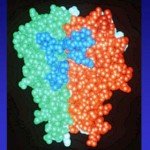 It’s time to add another tick in the pro column for exercise and weight loss.
It’s time to add another tick in the pro column for exercise and weight loss.
SHAPE-2
Two studies provide support to the importance of physical activity and weight loss. In a study called SHAPE-2, researchers wanted to find out if there was a reason to lose weight and become physically active. Guess what? The answer is a definite yes!
Investigators in the Netherlands assigned 243 post-menopausal, inactive, breast cancer survivors to three groups. All of these breast cancer survivors, average age of 60, had a body mass index (BMI) averaging about 29 which is considered overweight. Their average amount of body fat ranged from 43 to 44 percent of their total weight.
- Group 1 (97 women) was the diet group. These women were asked to reduce their calorie intake by 500 calories per day.
- Group 2 (98 women) was the exercise group. These women were asked to increase their physical activity to 4 hours of moderate to vigorous aerobic and resistance exercise per week.
- Group 3 (48 women) was the control group. They were asked to maintain their current weight.
Groups 1 and 2 had the goal of losing 11 to 13 pounds over a 4-month period of time.
So what happened?
The researchers wanted to find out what happened to the levels of sex hormones. Serum estradiol, free estradiol and free testosterone were all reduced in Group 1 and Group 2. Those who exercised achieved higher reductions in body weight, body fat and physical fitness compared to Group 1 (diet). The researchers also found that those breast cancer survivors who lost weight through exercise also had “stronger favorable effects on breast cancer-related hormones.”
LEAN
Another study conducted at Yale University, called the LEAN study, looked at the effect of weight loss on biomarkers, specifically inflammatory and metabolic biomarkers. According to the World English Dictionary (online) the term biomarker means “a substance, physiological characteristic, gene, etc that indicates, or may indicate, the presence of disease, a physiological abnormality or a psychological condition.”
One hundred overweight and obese breast cancer survivors participated in the study. These survivors of breast cancer stage 1 or 2, had an average age of 59 years. They were all receiving endocrine therapy. There were three groups.
- Group 1 (33 women) received the usual care and brochures on nutrition and physical activity. They also received a 30-minute counseling session at 6 months.
- Group 2 (33 women) received 11 30-minute in-person weight loss counseling sessions over 6 months.
- Group 3 (34 women) received 11 30-minute via phone weight loss counseling sessions over 6 months.
Groups 2 and 3 had the goals:
- 10,000 steps per day
- 10% weight loss
- 150 minutes of physical activity per week (30 minutes over 5 days)
All three groups had to weigh in at the beginning of the study and at the end of 6 months. They all had fasting blood samples taken at the beginning of the study and at the end of 6 months. Analysis of blood included obtaining levels of insulin, glucose, IGF-1, CRP, TNF-a, IL-6, leptin and adiponectin.
Why do an analysis for these markers?
Here’s a brief explanation of each of the markers that were tested and what they are associated with. If you don’t need this level of detail,  skip this section…
skip this section…
1) Increased insulin-like growth factor (IGF-1) raises cancer risk. Decreased levels of IGF-1 are associated with decreases in the growth of existing cancer cells.
2) CRP or C-reactive protein is elevated when there is an inflammation in the body. Cancer cells increase the amount of this protein in the blood.
3) Tumor Necrosis Factor alpha (TNF-a): This protein is created by the immune system and primarily regulates immune cells. Unfortunately it can become “dys-regulated” and cause chronic inflammation. Chronic inflammation has long been associated with the development of cancer and TNF-a is called the master switch because it is linked to all the steps involved in cancer development.
4) IL-6 or Interleukin 6 is another protein secreted by immune cells when trauma occurs. Increases in IL-6 are associated with cancer. Stopping its overproduction is a possible strategy to reduce cancer risk.
5) Leptin is a hormone made by fat cells which regulates the amount of fat that is stored. It is also involved in the feeling of hunger. It is elevated in people who are developing cancer.
6) Adiponectin is a hormone that is involved in glucose regulation and fatty acid oxidation. People with decreased levels of Adiponectin are at higher risk for cancers. Increased levels of this may be used as an anticancer agent.
So what happened to the Lean Study Participants?
Of Groups 2 and 3, the intervention groups, 52 women completed the study and 29 of the usual care group finished. Those women who received the phone and in-person counseling lost significantly more weight than the usual care group. For Groups 2 and 3, their CRP levels decreased by 30% compared to only 1% in the usual care group. They also showed decreases in insulin, glucose, leptin and TNF-A but these were not significant compared to the usual care group. Additionally they showed increases in adiponectin, IL6 and IGF-1 but this was not significant.
When researchers looked at the women in the intervention group that had lost more weight (greater than 5% of their weight=27 women) and compared those who lost less weight (less than 5% of their body weight=25 women), they found significant differences in these markers. Those that lost more weight had significant decreases in CRP, insulin, leptin, IL-6 and increases in IGF-1 compared to those who lost less weight.
So the bottom line?
Weight loss and exercise seem to have positive effects in reducing hormones and proteins that are implicated in breast cancer spread. So get out your walking shoes and eat more fruits and vegetables!






